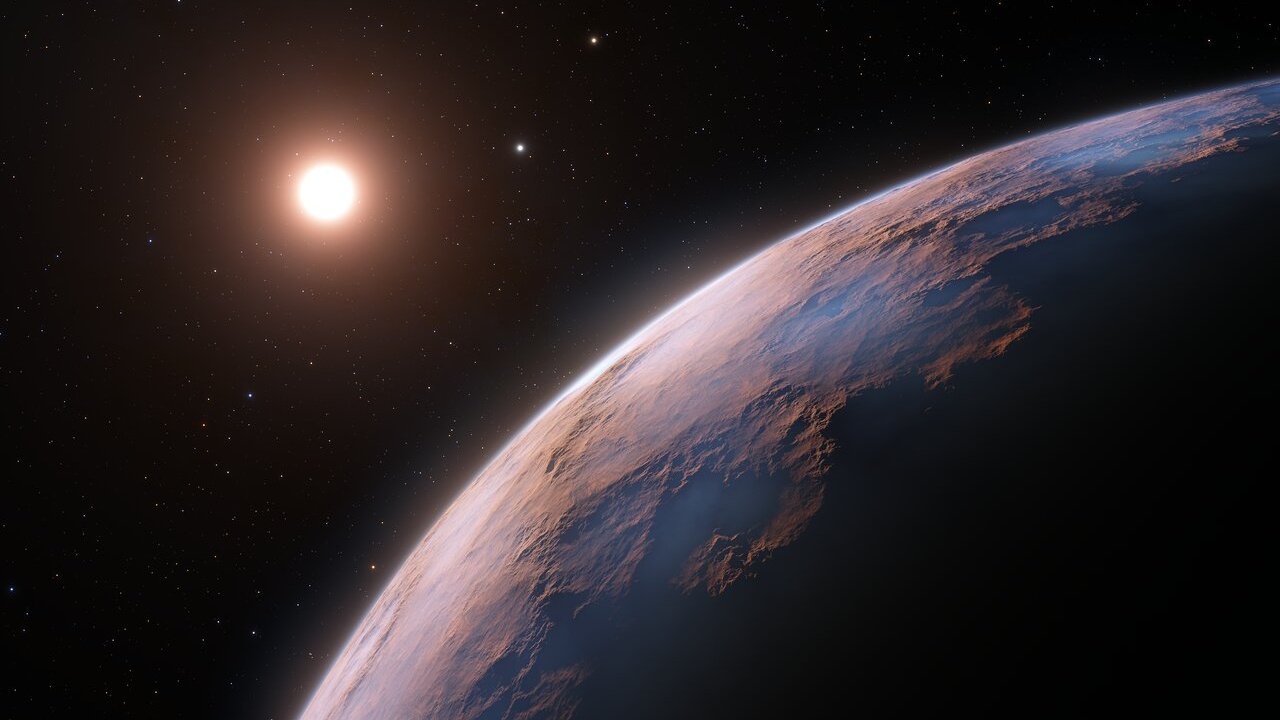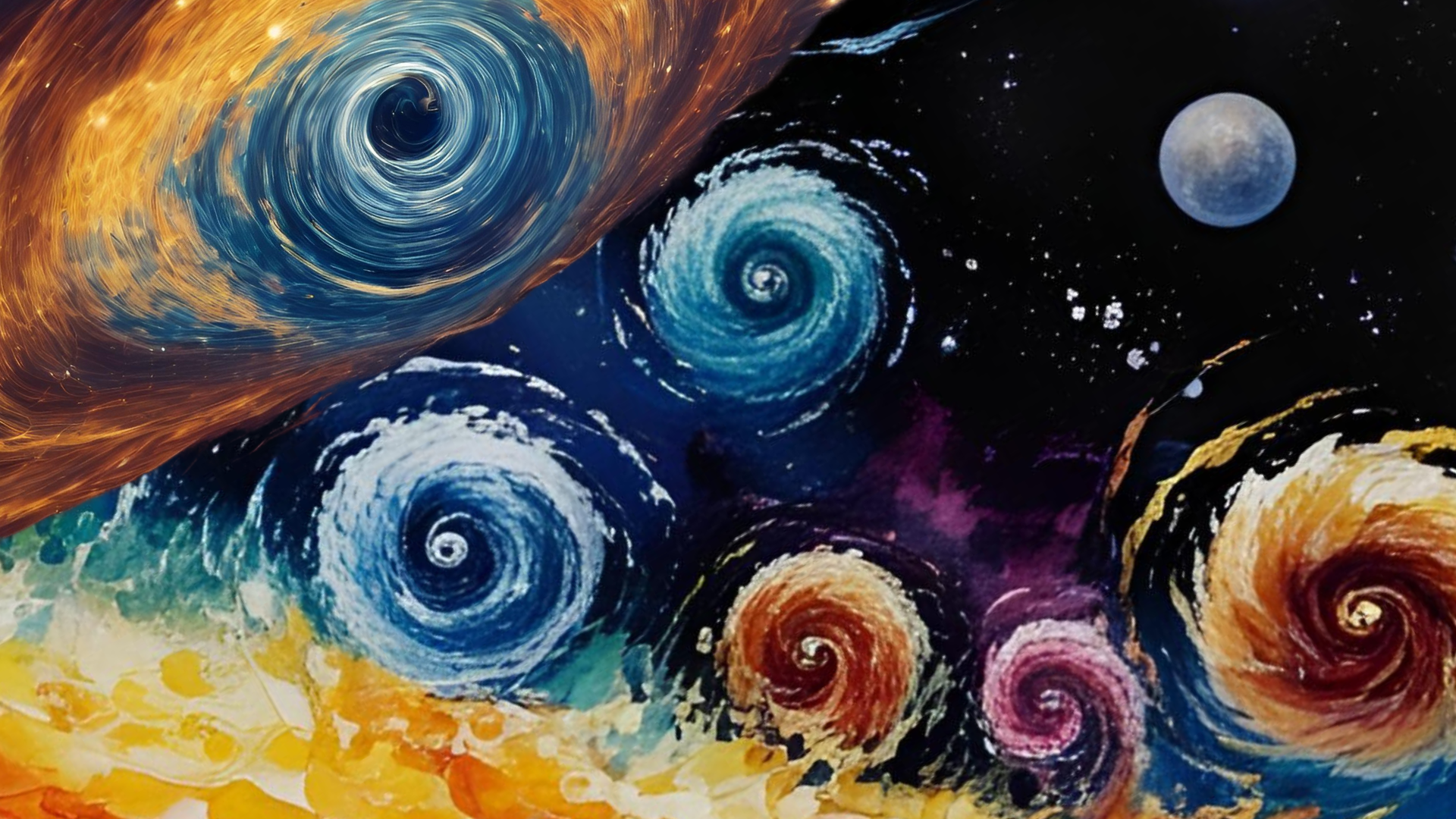Could Earth ever become a rogue planet?
How can we save Earth from the sun's searing death throes?


In about 5 billion years, the sun will die.
But as it ages, it will get brighter and hotter, and by about 500 million years from now, our star will have heated Earth beyond redemption. But is there any way to save our planet from its disastrous demise?
Indeed, there is. Our distant descendants could steal energy from Jupiter's orbit and give it to Earth. But if they got it wrong, they'd send our planet careening out of the solar system.
Earth has held stable in its orbit for over 4 billion years, but it faced a precarious birth. The early solar system was filled with dozens, if not hundreds, of solid bodies called planetesimals, all of which were competing to accrete as much material as possible and become full-fledged planets before the others stole it.
Related: Will our solar system survive the death of our sun?
In that chaos, the planetesimals collided, swung too close to each other and got whipped by the growing gravitational power of the gas giants. Of those dozens of potential planets, only eight survived; the rest were either launched into the sun or ejected into interstellar space.
Things won't be so pretty in the future, either. Every day, the sun gets slightly hotter and brighter — a natural byproduct of the buildup of helium from the fusion of hydrogen in its core. In about 500 million years, the sun will become so hot that Earth's oceans will evaporate, plate tectonics will grind to a halt, and so much carbon dioxide will build up in the atmosphere that our planet will look like Venus.
Get the Space.com Newsletter
Breaking space news, the latest updates on rocket launches, skywatching events and more!
To save ourselves, we'd have to play the same kinds of gravitational games that our young solar system was accustomed to.
A deadly dance
Imagine you're standing on railroad tracks and a train is headed right for you. If you wanted to match your speed with the train's, you could just let it smash into you — and while some parts of you might achieve the required velocity, it probably wouldn't be in the way you intended. But instead, say you had a perfect bouncy ball with you — a ball that could never, ever break. (This is needed to make this analogy work, but don't try this at home.)
If you were to throw the ball at the train, it would hit the train and bounce back at you much faster than you threw it, because it would have its original speed plus the speed of the train. That would slow down the train a bit, but because it would have so much energy available, it wouldn't even notice. If you were to catch the ball, that energy would transfer to you, accelerating you just a little bit. If you were to repeat the process over and over again, eventually you'd match the speed of the train — safely.
To save Earth, we'd have to raise its orbit, keeping it safely away from the ever-angrier sun. Raising Earth's orbit would require energy, but thankfully, our solar system has heaps of energy available in the form of Jupiter's orbit.
Making an orbital version of our train analogy, we could take a rock (any rock would do, but the bigger, the better) and send it toward Jupiter. We could loop that rock around the giant planet, sapping some of its orbital energy and giving it to the rock, which would zoom back toward Earth. Then, we'd repeat the maneuver but in the opposite direction, giving some of the rock's energy to our planet.
Inch by inch, we could steal energy from Jupiter (which, like the train, wouldn't even notice) and raise the orbit of Earth, keeping its temperatures nice and stable.
No turning back
But if we got it wrong, we'd have hell to pay. Jupiter has a lot of orbital energy. And with our rock-tossing scenario, we'd be setting up a phenomenon called a resonance effect. Each individual pass of the rock wouldn't contribute a lot of energy, but if it were to happen regularly, in the same pattern, time after time, then that little bit of energy would reinforce itself, amplifying the effects.
If we weren't careful, we could give so much energy to Earth that it would achieve solar escape velocity, permanently exiting the solar system. Once gone, it would never come back, doomed to roam the cosmos as a rogue planet. The planet would still have its internal heat, so volcanoes and hot springs would still work — but we'd be locked in permanent night, which would catastrophically chill the atmosphere (not to mention kill all the plants and algae).

Astronomers think such resonance scenarios naturally lead to the release of even more rogue planets (and dwarf planets) later in the lives of solar systems. For example, Neptune and Pluto are in resonance, and it's impossible to predict where Pluto's orbit will take it past 10 million years. There's a small chance that Mercury will end up in resonance with Jupiter — and a small chance that in the next billion years, it will simply exit the solar system.
Astronomers estimate that there are somewhere between 0.25 and 10,000 rogue planets for every star, all drifting through the interstellar wastes of the Milky Way. That number is understandably broad, because we have precious few observations of rogue planets, and so it's difficult to construct solid statistics. But let's hope that our future descendants don't inadvertently add one more to the list.
Learn more by listening to the "Ask A Spaceman" podcast, available on iTunes and askaspaceman.com. Ask your own question on Twitter using #AskASpaceman or by following Paul @PaulMattSutter and facebook.com/PaulMattSutter.
Join our Space Forums to keep talking space on the latest missions, night sky and more! And if you have a news tip, correction or comment, let us know at: community@space.com.

Paul M. Sutter is an astrophysicist at SUNY Stony Brook and the Flatiron Institute in New York City. Paul received his PhD in Physics from the University of Illinois at Urbana-Champaign in 2011, and spent three years at the Paris Institute of Astrophysics, followed by a research fellowship in Trieste, Italy, His research focuses on many diverse topics, from the emptiest regions of the universe to the earliest moments of the Big Bang to the hunt for the first stars. As an "Agent to the Stars," Paul has passionately engaged the public in science outreach for several years. He is the host of the popular "Ask a Spaceman!" podcast, author of "Your Place in the Universe" and "How to Die in Space" and he frequently appears on TV — including on The Weather Channel, for which he serves as Official Space Specialist.
-
rod The article concludes with - "Astronomers estimate that there are somewhere between 0.25 and 10,000 rogue planets for every star, all drifting through the interstellar wastes of the Milky Way. That number is understandably broad, because we have precious few observations of rogue planets, and so it's difficult to construct solid statistics. But let's hope that our future descendants don't inadvertently add one more to the list."Reply
When it comes to making prophecies of Earth's future, it is good to project the prophecy far into the future too like 500 million to 5 billion years from today :)
Rogue planet reports are out there in the publications, here is a recent example.
Astronomers uncover largest group of rogue planets yet, https://phys.org/news/2021-12-eso-telescopes-uncover-largest-group.html
Reference paper, A rich population of free-floating planets in the Upper Scorpius young stellar association, https://www.nature.com/articles/s41550-021-01513-x, 22-Dec-2021. "Abstract The nature and origin of free-floating planets (FFPs) are still largely unconstrained because of a lack of large homogeneous samples to enable a statistical analysis of their properties. So far, most FFPs have been discovered using indirect methods; microlensing surveys have proved particularly successful to detect these objects down to a few Earth masses1,2..."
My observation. From the abstract cited, "Therefore, ejections due to dynamical instabilities in giant exoplanet systems must be frequent within the first 10 Myr of a system’s life."
My note. All the possible rogue planets reported are dated very young in the area near the Sun studied (relative to the age of the Sun, some 4.6 billion years old), perhaps 10 million years old or less. One possible formation mechanism identified is ejection from other planetary systems that formed (obviously very recently too relative to the solar system age). This seems to require much catastrophism and violence during protoplanetary disk evolution events postulated to explain the origin of planets.
My note, from the phys.org report, "We did not know how many to expect and are excited to have found so many,".
This indicates that a specific origin model using gas clouds and protoplanetary disks, did not predict how many rogue planets could be found, so the exact formation of rogue planets is not certain, like heliocentric solar system astronomy. Example, measurements for the solar parallax based upon Mercury and Venus transits, used to define the distance between Earth and the Sun or observations of the phases of Venus. My note. The phys.org report states, the study suggests there could be many more rogue planets that have not been discovered. "There could be several billions of these free-floating giant planets roaming freely in the Milky Way without a host star," Bouy explains." My note. This suggest that billions of rogue planets may exist, free floating in the MW. Do observations like this impose constraints on the postulated evolutionary events in the solar, protoplanetary disk that Earth is said to evolve from? Example, what constrained our Earth from evolving, *naturally* into a wandering, rogue Earth in the MW?
My point here is simple. If we inquire about the Earth becoming a rogue planet in the far distant future in the solar system, how about explaining and demonstrating how Earth avoided becoming a rogue planet at the beginning in the solar nebula? -
Homer10 If you steal some energy from Jupiter, then it's orbit would get smaller a little bit each time we used the rock to take a little energy. So Jupiter's orbit shrinks, and Earths orbit grows. This could cause all sorts of strange unpredictable resonances. Also the transition time would lend to unexpected results. A very dangerous thing indeed.Reply -
Glaroon Robert Heinlein talked about moving planets in his 1951 Between Planets and I am sure there were others before him. But the process should not require a gravitational object as large as Jupiter. Much smaller objects over a longer period of time (millions of years even) should do the trick and tidal effects on Earth's geology (e.g. earthquakes) could then be better accommodated.Reply









